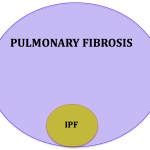Life does not stop because you are diagnosed with idiopathic pulmonary fibrosis. Rather, most of my patients feel that life accelerates. There seems to be a rush to accomplish certain tasks. Taking a family vacation is an important item on most of my patients’ to do list. IPF creates some challenges but these are not insurmountable with planning and flexibility. Patients … [Read more...]
Making Life Easier for Pulmonary Fibrosis Patients
One of the challenges of IPF is that as the disease progresses, the activities of daily living become more challenging. Getting out of the house becomes a big chore and patients increasingly limit what they are willing to do. This may lead to isolation and amplify loneliness and disconnection from family and friends. Hobbies are often ignored and your spouse or partner must … [Read more...]
2015 Updated American Thoracic Society Guidelines for Idiopathic Pulmonary Fibrosis
The American Thoracic Society recently published updated guidelines for IPF. These new guidelines reflect the recent advances in treatment. We provide the link for those interested in the unabridged document. Below I summarize the recommendations. New and Revised Recommendations Against Use 1. Anticoagulation: strong recommendation against use for treatment of … [Read more...]
Non-Idiopathic Pulmonary Fibrosis
We have received a variety of questions about pulmonary fibrosis that is not Idiopathic Pulmonary Fibrosis (IPF). The terminology is quite confusing in this area of medicine. IPF is a very specific diagnosis that is only a small portion of the universe of pulmonary fibrosis. Most patients with pulmonary fibrosis have non-IPF pulmonary fibrosis. Many types of lung … [Read more...]
Pulmonary Fibrosis Exacerbation
Patients with Idiopathic Pulmonary Fibrosis (IPF) often enjoy prolonged periods of stability where their disease does not progress. Other patients may have very gradual worsening of symptoms. On this background, IPF patients at times may experience more abrupt decline. Many patients first notice increased cough followed by increased shortness of breath. This pattern should … [Read more...]




